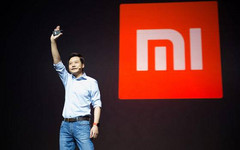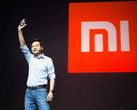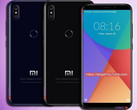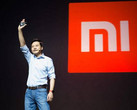Xiaomi released the Mi Mix 2S a few months ago. The device was heavily marketed as a camera device, and with good reason—it recorded an impressive overall score of 97 on photography benchmark site DxOMark.
While we’ve had our misgivings about DxOMark’s evaluation criterion and the all-round subjectivity level of the website, we’ll also be the first to admit that the Mix 2S cameras do perform ridiculously well. For some perspective, going by DxOMark’s evaluation, the Mix 2S sits alongside hallowed company at the roundtable of camera smartphones. The device is said to be on par with the iPhone X and Huawei Mate 10 Pro.
Imagine telling someone a few years ago that a Xiaomi device would ever be able to compete with an iPhone in the camera department.
Madness. Sheer undiluted hogwash.
But that looks to be the reality at the moment. The Mix 2S may not be a better camera performer than the most expensive iPhone ever produced but it does hold its own—and hold it well, it does. Xiaomi devices have seen an uptick in the quality of their cameras over the past few months. The hardware hasn’t exactly seen a massive improvement, but the company has started dedicating more time to the less tangible image processing side of things, even going as far as to open a camera department.
The results have been stunning. The Mi Note 3 was an able performer, scoring an impressive 90 on DxOMark—placing it besides the iPhone 7 and first-gen Pixel. The Redmi Note 5 Pro has been hailed for its excellent camera performance, too, with outlets rating it as outperforming devices bearing twice its MSRP.
Which brings us to price. Xiaomi is without a doubt the best at producing value for money smartphones. A perfect representation of that statement would be the fact that the company had an entry—two in some, even—in every category of our best value smartphone list of 2017.
The company managed to leverage that USP into becoming the fourth-largest smartphone brand by the end of Q1 2018—and could even go third sometime in the near future; Huawei’s recent troubles and Xiaomi's incessant harrying of the market with new devices taking the two companies in opposite directions. By offering devices at half the price of its rivals, Xiaomi has gained an almost preposterous grip on markets like India, and is also making in-roads into West Africa.
Still, It Could Be Better
The camera performance is better than ever, the build quality impresses, and community support has gotten better with the release of kernel sources for different devices over the past few months. And yet, it’s not all rosy. Xiaomi still, at times, exhibits traits of a shady Chinese OEM. The company, for example, ships devices with different hardware batches, Different display panels, different camera sensors—things the traditional top-dogs wouldn’t do. There’s also the software, MIUI, which is as divisive as it gets.
One has to look no further than the new Mi 8 to find a complete distillation of Xiaomi’s troubles—that of identity. The company has made a name for providing bang-for buck gadgets but is yet to create a single cohesive identity for itself. Apple offers pseudo-exclusivity and privacy, and Samsung brings the best hardware to the table. That is, perhaps, why the Mi 8 was such a blatant copy of the iPhone X. An irreversible mark left on a device that should have, at the very least, attempted to go up against Apple’s marquee offering.
This lack of a concrete identity is one of the issues the company has to iron out if it’s to make its way into the US market. The world’s third-largest smartphone market is a different beast from the Chinese and Indian markets that Xiaomi has dominated. Value for money may be attractive but it’s nowhere near the biggest priority in that domain, and Xiaomi will just have to do more if it’s to be regarded as something other than an upstart Chinese brand.
The Top Beckons
But then, most OEMs have their shortcomings, and Xiaomi’s are nowhere near the most cardinal of them. The company has begun its incursion into Europe, and with the US still in Lei Jun’s sights, it’s about time we all came to the realization that the smartphone brand with a quirky name may not be underdogs anymore, and could, in fact, be kings soon.














